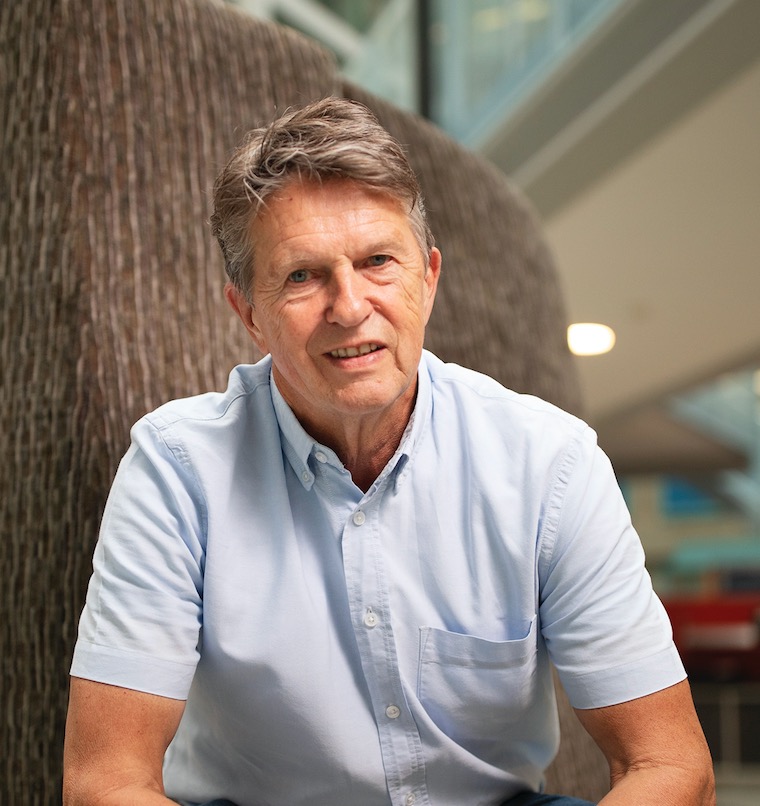https://doi.org/10.55788/79fc3ac8
Prof. Salomon Manier (Lille University Hospital, France) compared the value of ASCT and CAR T-cell therapies for the treatment of patients with MM. “We do not have data from phase 3 trials comparing ASCT to CAR T-cell therapy in patients with MM,” Prof. Manier stated [1]. “Therefore, we do not yet know which is the better option. We can, however, speculate on this topic using the currently available data.”
ASCT has been shown to deliver an additional 1 to 2-year progression-free survival when added to a standard-of-care therapy [2–5]. The data does not demonstrate a benefit of ASCT on overall survival. “However, when we look at the IFM2009 trial, we can see that 76% of the patients who relapsed in the control arm received delayed ASCT, confounding the overall survival data,” added Prof. Manier [1,3]. Furthermore, additional ASCT is associated with higher minimal residual disease (MRD)-negativity rates (10-6) than the standard triple therapy of lenalidomide, bortezomib, and dexamethasone (RVd) alone (29.8% vs 20.4%; P=0.01) [3]. Similarly, higher 1-year persistent MRD-negativity rates (10-5) were reported for carfilzomib, lenalidomide, dexamethasone (KRd) plus ASCT than for KRd alone (90% vs 78%).
“What can we expect from CAR T-cell therapies in terms of MRD negativity?” asked Prof. Manier [1]. The phase 2 KarMMa trial, investigating idecabtagene vicleucel (ide-cel) in participants with MM in the late-stage setting, showed an MRD-negativity (10-5) rate of 48% for participants who were treated with the recommended dose of ide-cel [6]. Also, in the phase 1b/2 CARTITUDE-1 trial, ciltacabtagene autoleucel (cilta-cel) displayed an MRD-negativity rate of 91.8% in participants with MM who received 6 prior lines of therapy and were evaluable for MRD [7]. The MRD-negativity rate was 58% when the complete study population was considered. “Then we have the DUAL FasT CAR-T cells, targeting BCMA and CD19,” continued Prof. Manier. “A phase 2 study evaluating this option in a heavily pre-treated patient population showed that 100% of the participants who were evaluable for MRD (27 out of 28) reached MRD negativity” [1,8].
Prof. Manier commented that the results from these trials do not come from intention-to-treat populations but from patients who actually received CAR T-cell therapies. The KarMMa-3 trial (n=386) did provide results from an intention-to-treat population. The included participants had received 2 to 4 prior lines of therapy and were randomised 2:1 to ide-cel or a standard regimen, resulting in a clear progression-free survival benefit for participants who were treated with ide-cel (13.3 months vs 4.4 months; HR 0.49; P<0.0001) [9]. In total, 20% of the participants reached a complete response or better plus MRD negativity (10-5). “Furthermore, emerging data is showing that early CAR T-cell therapy is likely to result in better responses than when this type of therapy is administered in later lines,” said Prof. Manier [1,10,11].
The phase 3 CARTITUDE-6 trial (NCT05257083), comparing head-to-head in the frontline ASCT and CAR T-cell therapy following DRVd, will provide more insights. “Since a high tumour burden is a risk factor for severe cytokine release syndrome (CRS), the results of this trial may show us that frontline CAR T-cell therapy reduces the rate of severe CRS compared with administering CAR T-cell treatment in later lines of therapy,” added Prof. Manier.
- Manier S. CAR-T versus ASCT in Myeloma. JS03-2, European Society for Blood and Marrow Transplantation (EBMT) 49th Annual Meeting, 23–26 April 2023, Paris, France.
- Attal M, et al. N Engl J Med 1996;335(2):91–97.
- Attal M, et al. N Engl J Med 2017;376:1311–1320.
- Richardson PG, et al. N Engl J Med 2022;387:132–147.
- Gay F, et al. Lancet Oncol. 2021;22(12):1705–1720.
- Raje NS, et al. Abstract 635, ASH 2020, 05–08 December.
- Usmani SZ, et al. J. Clin. Oncol. 2021;39(15)_suppl:8005–8005.
- Du J, et al. Clin. Oncol. 2022; 40(16)_suppl:8005–8005.
- Rodríguez-Otero P, et al. N Engl J Med 2023;388:1002–1014.
- Cohen AD, et al. JCI. 2019;129(6):2210–2221.
- Garfall AL, et al. Blood Adv. 2019;3(19):2812–2815.
Copyright ©2023 Medicom Medical Publishers
Posted on
Previous Article
« DETERMINATION: Does one size fit all in multiple myeloma? Next Article
Letter from the Editor »
« DETERMINATION: Does one size fit all in multiple myeloma? Next Article
Letter from the Editor »
Table of Contents: EBMT 2023
Featured articles
CAR T cells rise to the front in multiple myeloma
Acute Leukaemia
Quizartinib plus chemotherapy improves OS in patients with AML undergoing ASCT
Blinatumomab may improve outcomes in patients with B-cell ALL undergoing ASCT
Is ASCT a reasonable option in patients with invasive aspergillosis?
Tacrolimus versus cyclosporine A in AML
Promising novel target identified for AML
Multiple Myeloma
Ide-cel superior to standard therapies in triple-class exposed RRMM
ASCT or CAR T cell as first-line therapy for MM?
DETERMINATION: Does one size fit all in multiple myeloma?
Graft-Versus-Host Disease
New options to treat steroid-refractory chronic GvHD
New developments in steroid-refractory acute GvHD
Miscellaneous Topics
Long-term success for CD19 CAR T-cell therapy in CLL
Can molecular data improve prognostication in MDS patients undergoing HSCT?
Next-generation cell therapies for cancer: CAR-NK cells
Novel drugs and strategies around ASCT for Hodgkin lymphoma
Thalassaemia: Advances in conventional transplantation and gene therapy
Related Articles

February 4, 2022
Letter from the Editor
© 2024 Medicom Medical Publishers. All rights reserved. Terms and Conditions | Privacy Policy

